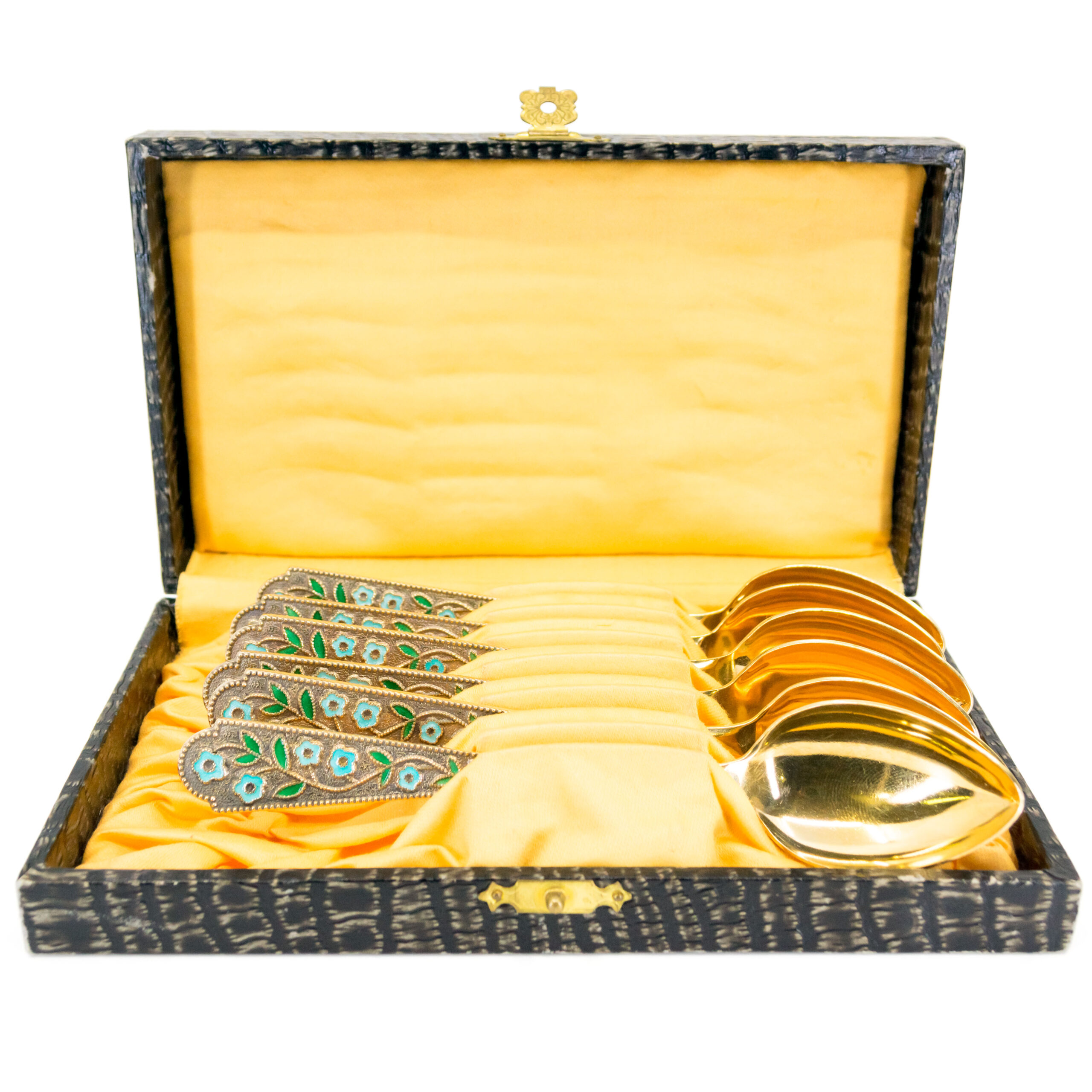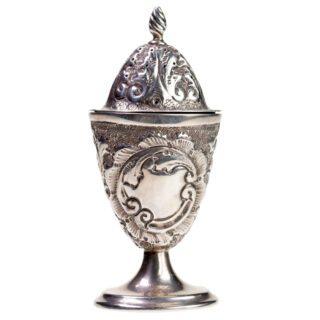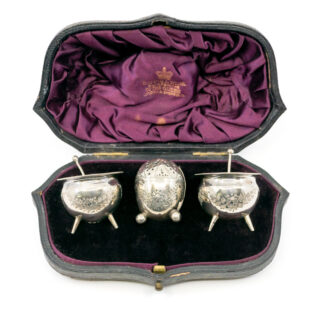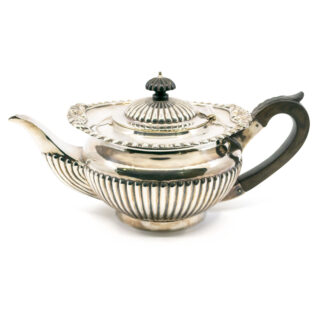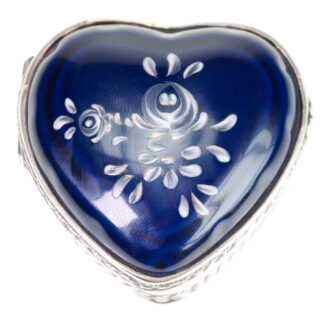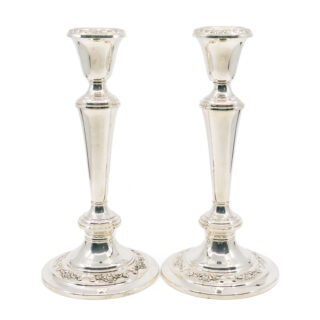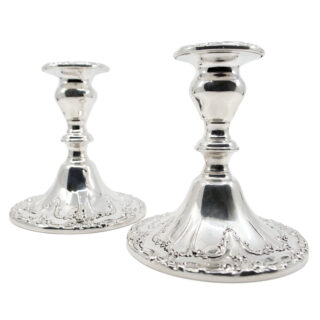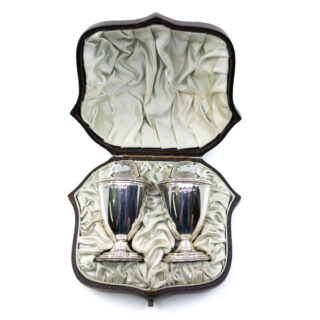This stylish mid-century (1950-1970) cloisonné spoon set, made in Russia, is crafted in 84 zolotnik silver and features enamel. Zolotnik is a unit of measurement used to indicate the fineness of gold or silver. Cloisonné is a type of decorative art in which enamel is applied to a metal surface in patterns or designs and is separated by thin metal strips, or cloisons. Russia.
Details: Enamel, Silver Spoon Set, Russia.
Design Era: Mid 20th Century (1950-1970).
Dimensions: 14.3 x 3 cm.
Weight in grams: 136.
Condition: Very good condition – slightly used with small signs of wear.
Shipping and Pickup: This stylish piece ships from our store located in the center of Amsterdam, The Netherlands. We offer both registered shipping and local pickup at our store. In the case of local pickup, any applicable shipping costs will be refunded.
About Us: Add some sparkle to your style with Binenbaum.com. We offer a stunning selection of antique and vintage jewelry that you won’t find anywhere else. From timeless rings and dazzling necklaces to unique brooches, we have something for every taste and occasion. Visit our website today and treat yourself to a piece of history.
| Design Era | |
|---|---|
| Design & Historical Context | The 1950s were a time of great cultural and technological change, marked by the emergence of rock 'n' roll, the birth of the "Beat" Generation, the launch of Sputnik, and the beginning of the space race. These events, and the knowledge that the world was living in a nuclear age, contributed to the development of an aesthetic known as the "Atomic Age," which was reflected in various aspects of design, including jewelry. |
| Key Materials | |
| Materials & Craftsmanship | Enamel Enameling is a decoration technique in which a glass of certain composition is fused to the surrounding or under laying metal. Although the exact origins are unknown, the art of enamelling has been practiced since ancient times. The favor of adorning jewelry with bright colors has always existed and the use of glass created colors which nature – in the form of gemstones – could not provide for in ancient times. Excavations on Cyprus – in the Mediterranean – in the 1950's brought cloisonné enameled jewelry to the surface which dates from the 13th and 11th century BC. These are, to date, the earliest enameled items found in this particular technique. Silver Silver is a white metallic element that is known for its excellent conductivity of heat and electricity. It is represented on the periodic table of elements by the symbol Ag, and it is a member of the noble metals, which are known for their excellent resistance to oxidation. Silver is a relatively soft metal, with a hardness that is intermediate between gold and copper. It is more malleable and ductile than gold, which means that it can be easily shaped and molded into various forms. However, it is not as hard as copper, which means that it is more prone to scratches and other types of damage. Because of its softness, silver is usually alloyed with another metal to harden it enough to maintain the desired shape and details when it is used in jewelry and other decorative objects. This helps to give it the necessary strength and durability for use in these types of applications. Throughout history, silver has played a prominent role in the production of jewelry and objets d'art. It is prized for its beauty and versatility, and it is often used in a wide variety of different types of jewelry, including rings, earrings, pendants, and bracelets. It is also used in decorative objects, such as candlesticks, vases, and other decorative items. |
| Dimensions | 14.3 x 3 cm |
| Weight (in grams) | 136 |
| Condition | Very good condition – slightly used with small signs of wear |
Enhance the Beauty of Your Jewelry with Proper Care
Wearing your jewelry is a special way to express yourself and add a touch of personal style to any look. However, to ensure your jewelry remains in pristine condition, there are a few simple steps you need to take to keep it looking its best.
General Care Instructions:
Remove jewelry when showering or bathing, especially when at the beach, in the sea or in chlorinated water.
Avoid wearing jewelry while doing physical work such as housekeeping, gardening or exercise.
Storing your jewelry in a dry and cool place will help protect it from moisture, dirt and dust.
Keeping it away from harsh chemicals such as bleach, ammonia and chlorine will help to avoid discoloration and damage.
Cleaning your jewelry regularly with a soft cloth will help to keep it looking shiny and new.
Avoid exposing your jewelry to extreme temperatures, such as leaving it in direct sunlight or near a heater, as this can cause damage.
Handle your jewelry carefully and avoid dropping it, as this can cause the stones to loosen or the metals to scratch.
Finally, if possible, have your jewelry professionally checked and serviced. This will ensure that any potential problems are spotted and fixed before they become worse.
By following these tips, you can enjoy your precious jewelry for many years to come.
Related products
-
Silver Repoussé Salt And Pepper Shakers Set 883-0973
€ 245,00 VAT incl. (where applicable) -
Silver Antique Salt Cellar 10821-2758
€ 995,00 VAT incl. (where applicable) -
Silver Antique Tea Pot 856-2147
€ 1.995,00 VAT incl. (where applicable) -
Silver Judaica Hanukkiah 8656-2590
€ 2.895,00 VAT incl. (where applicable) -
Enamel Porcelain Silver Heart-Shape Box 827-0841
€ 595,00 VAT incl. (where applicable) -
Silver Pair Of Convertible Candlesticks 8576-2581
€ 1.695,00 VAT incl. (where applicable) -
Silver Pair Of Candlesticks 8573-2578
€ 695,00 VAT incl. (where applicable) -
Silver Set Of Salt And Pepper Shakers Set 7626-2460
€ 895,00 VAT incl. (where applicable)
- Home
- Collection
- Fine Jewelry
- Silver Jewelry
- Silverware
- Boxes
- Candlesticks
- Salt and pepper shakers
- Miniatures
- Salt cellars
- Spoon Set
- Condiments
- Frames
- Napkin Ring
- Spoon
- Oddities
- Cups
- Vases
- Cutlery
- Serving Spoon And Cake Server
- Candlesticks
- Baskets
- Hanukkiah
- Spice Tower
- Yad
- Tea Set
- Sugar Castor
- Napkin Rings
- Wine Bottle Coaster
- Wine Stopper
- Tea Pot
- Jugs
- Rattles
- Hip Flask
- Miscellaneous
- Rings 💍
- About
- Contact
